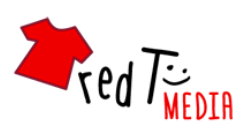Racism and The Problem of “Other”: How To Think It Through With Kids
No doubt right now, there are children asking about racism, protests, and the general state of marginalized people. Maybe your child is feeling unsafe and confused themselves, or maybe they’re empathizing with children who are. Maybe they’re wondering what they can do to help, or why these conflicts happen at in the first place.
These are all very important feelings and thoughts, for thinkers of all ages, and thankfully, there’s all kinds of discussion online about how we can address them with our children. We want to reiterate, as many sources have been lately, that it’s never too early to start talking about racism, or any kind of discrimination, with your child. There are ways to approach it in an age-appropriate way that will open up dialogue and have a lasting, positive impact.
One very useful and accessible approach is to talk with little thinkers about the whole idea of “other”. It sounds big and complicated (because it is), but being open to your child’s questions and having conversations about it can get your whole family thinking.
Here are some questions to try:
How am I different from everyone else? What do I have in common with all other human beings?
If I don’t understand someone else, what’s the best way to find out what I need to know?
Is calling someone “other” a bad thing? How do we treat people differently when we think of them as “other”?
Who gets to decide who is “other”?
How does it feel to know that for some people, I am “the other”?
Why do non-human creatures sometimes feel like “other” to us? Do we need to feel this way?
And here are some important things to keep in mind as you discuss these questions:
You aren’t going to have all the answers. You may not have any of them. The difference between self and other, or at least our assumptions about it, are what fuel all kinds of prejudice and discrimination. The mere act of talking about it, and thinking critically about it, is a very important step.
Your child may think about the self/other distinction in a very different way than you do, especially if they’re very young. The fact that they haven’t had years to internalize discrimination and prejudice is a good thing. Theirs is a valuable perspective.
While discussing racism and “otherness” with your little thinker, you’re probably going to have to take stock of some of your own misconceptions and privilege. It’ll be uncomfortable, but it’s an opportunity to set a good example.
If your discussions with your child are short and intermittent, that’s fine. If this is a topic that comes up little by little, over a long span of time, that’s great. What’s important is that you open the door for this while your child is still young, so that they’ll have an age-appropriate framework with which to think about what they experience in the world. It’s really never too early to think critically about what makes someone “other”, and about how to bridge the distance.



